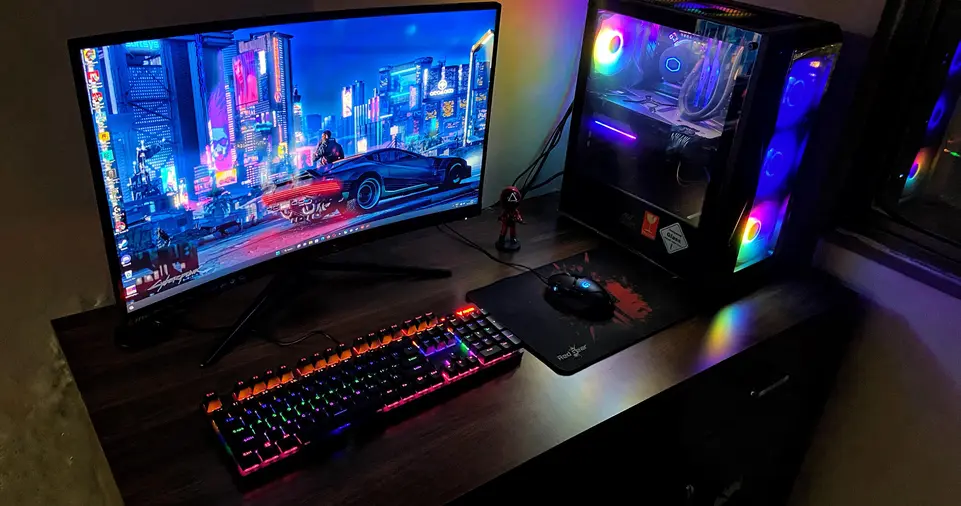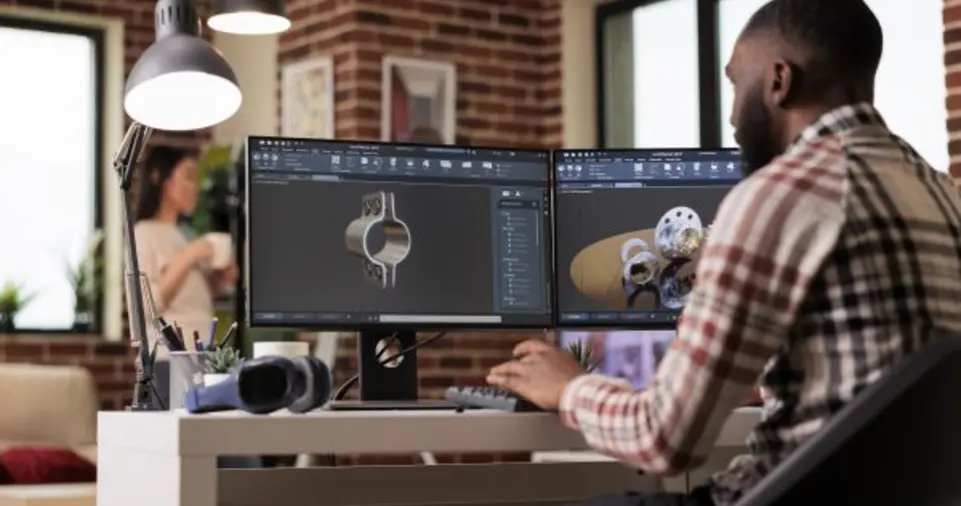Animation is a fascinating art form that spans across various industries, from movies and TV shows to video games and web design.
Whether you’re just starting with simple 2D animations or delving into the complex world of 3D modeling and rendering, one of the most frequently asked questions by aspiring animators is: Do I need a high-end computer to animate?
The answer to this depends largely on the type of animation you intend to create.
While you don’t always need a top-tier computer, the performance of your machine can significantly impact the efficiency of your workflow, the complexity of projects you can handle, and the speed at which you can complete animations.
There are various options available, each suited to different types of animation—ranging from low-end systems for simple tasks to high-end machines that can handle complex 3D rendering.
This article will guide you through the different levels of computing power required for animation, providing an in-depth look at budget systems, mid-range setups, high-end machines, and the importance of hardware for rendering.
We will also explore the costs associated with animation hardware, how different setups affect performance, and how to make informed decisions when choosing the right equipment for your animation needs.
Budget Animation Systems: Can You Animate on a Low-End PC?
When you’re just starting out as an animator, the thought of investing in high-end hardware may feel intimidating.
The good news is that you don’t need an expensive computer to start animating, especially if your projects are relatively simple.
What Is a Low-End PC?
A low-end PC refers to a computer that typically features entry-level components—less powerful CPUs, basic integrated graphics, and limited RAM.
These systems are often designed for everyday tasks like web browsing, word processing, and media consumption but can still handle basic animation software.
Key Specifications:
- Processor: Intel Core i3 or AMD Ryzen 3
- RAM: 4GB to 8GB
- Graphics: Integrated graphics (Intel UHD or AMD Vega)
- Storage: 256GB SSD or 1TB HDD
Can You Animate on a Low-End PC?
Yes, you can animate on a low-end PC, but the types of animation you can create will be limited.
For example, basic 2D animation tasks like frame-by-frame drawing or vector-based animation can run well on systems with these specifications.
Software such as Krita, Pencil2D, or Adobe Animate will work on low-end PCs without requiring heavy system resources.
These programs are relatively light on memory usage and do not demand high GPU performance.
However, you may face challenges with more complex animations, such as detailed 2D scenes with many layers or frames.
Rendering speed may also be slow, and you may encounter lag when working on larger files.
Additionally, the lack of a dedicated GPU means that performance will suffer when working with more demanding tasks like rendering or 3D modeling.
What You Should Expect on a Low-End PC:
- Rendering: Slow, especially for more detailed animations or 3D work.
- Performance: Moderate lag during complex tasks; simple animations will run smoothly.
- Cost: Low to moderate, with prices ranging from $300 to $600.
A low-end PC is ideal for beginner animators working on simple 2D projects or animations that don’t require advanced features.
If your focus is on learning animation and experimenting with basic techniques, this can be a cost-effective starting point.
Medium-Power Animation Systems: The Sweet Spot for Hobbyists and Enthusiasts

If you’ve gained some experience in animation and want to take your skills to the next level, a mid-range PC may offer the right balance of power and cost.
These systems can handle more demanding tasks, such as more intricate 2D animations, beginner-level 3D modeling, and larger project files.
What Is a Mid-Range PC?
A mid-range PC typically features a more powerful processor, better graphics, and more RAM than a low-end system.
These systems are well-suited for hobbyists, enthusiasts, or those looking to break into the animation field professionally without breaking the bank.
Key Specifications:
- Processor: Intel Core i5 or AMD Ryzen 5
- RAM: 8GB to 16GB
- Graphics: Mid-tier dedicated GPU (NVIDIA GTX 1650 or AMD Radeon RX 5500)
- Storage: 512GB SSD or 1TB HDD
Can You Animate on a Mid-Range PC?
A mid-range PC is perfect for animators working with 2D and 3D animation software.
Programs like Toon Boom Harmony, Adobe After Effects, Blender, and Autodesk Maya will run efficiently on these systems, allowing you to handle more complex projects with multiple layers, backgrounds, and effects.
For 3D animation, a mid-range PC can support basic modeling, rigging, and simple rendering tasks.
However, keep in mind that complex simulations (like fluid dynamics or high-poly modeling) may still cause some slowdowns.
What You Should Expect on a Mid-Range PC:
- Rendering: Faster than on a low-end system, though complex scenes may still take time.
- Performance: Smooth workflow for most 2D and beginner-level 3D animations.
- Cost: Moderate, typically ranging from $700 to $1,200.
A mid-range computer is ideal for those who want to explore both 2D and 3D animation without the limitations of lower-end systems.
It’s a great choice for hobbyists, aspiring professionals, or content creators who need a balance between price and performance.
High-End Animation Systems: Power for Professional Animators
For professional animators, whether you’re working on a feature film, a AAA video game, or high-quality 3D simulations, a high-end computer is essential.
These systems are designed to handle complex tasks, speed up workflows, and manage the most demanding animation software.
What Is a High-End PC?
A high-end PC is built with top-tier components that can tackle intense workloads.
These systems come with the latest processors, high-end dedicated GPUs, and large amounts of fast RAM.
High-end PCs are capable of handling complex 3D scenes, detailed textures, large-scale simulations, and high-quality rendering without compromising performance.
Key Specifications:
- Processor: Intel Core i7 or i9, AMD Ryzen 7 or 9
- RAM: 16GB to 64GB
- Graphics: High-end GPU (NVIDIA RTX 3070 or AMD Radeon RX 6900 XT)
- Storage: 1TB SSD or more (with additional HDDs for backups)
Can You Animate on a High-End PC?
Yes, a high-end computer will allow you to work on both 2D and 3D animation projects with ease.
For 2D animation, complex scenes with numerous layers, intricate details, and effects will run smoothly.
For 3D work, high-end machines can handle heavy modeling, detailed textures, and sophisticated simulations such as fluid dynamics, cloth physics, and particle effects.
In addition, rendering on a high-end system is much faster, meaning you can quickly see your final results without having to wait for long processing times.
What You Should Expect on a High-End PC:
- Rendering: Fast, with minimal downtime.
- Performance: Seamless experience even with large files, complex scenes, and heavy simulations.
- Cost: High, with prices ranging from $1,500 to $3,000+.
For professional animators, studios, and those working on high-end 3D animation projects, a high-end computer is essential.
These systems are designed to handle massive workloads and render high-quality animations in a fraction of the time it would take on lower-end systems.
The Importance of Rendering in Animation: Understanding the Role of Hardware

Rendering is one of the most resource-intensive parts of the animation process.
It’s the final step where all of your 3D models, textures, lighting, and animations are processed and compiled into a final video or image sequence.
How Rendering Affects Performance
Rendering times are heavily influenced by your computer’s processing power and GPU capabilities.
High-end machines equipped with powerful CPUs and dedicated graphics cards can render complex animations much faster than mid-range or low-end systems.
For 3D animation, rendering can take hours, days, or even weeks, depending on the complexity of the scene.
If you’re working on a high-quality animated film, having a system capable of handling heavy rendering workloads will save you significant time and frustration.
Why Is GPU Important for Rendering?
The GPU (Graphics Processing Unit) plays a crucial role in rendering, especially for 3D animations.
A high-performance GPU accelerates the rendering process by handling the heavy lifting of calculating and rendering frames.
- Low-end PC: May use integrated graphics, which are not optimized for rendering and will cause slowdowns.
- Mid-range PC: Equipped with a mid-tier GPU, capable of rendering simpler scenes with acceptable speeds.
- High-end PC: A powerful GPU (like the NVIDIA RTX series) can dramatically improve rendering times and allow for high-quality effects.
Cost Considerations for Rendering
Professional animators and studios often invest in multiple high-end systems or even set up render farms (groups of computers that share the rendering workload) to handle large-scale rendering tasks.
For individual animators, using cloud rendering services can be a cost-effective way to speed up rendering times without needing to purchase an expensive machine.
ALSO READ: The Best Drawing Tablets for Beginners: A Guide to Getting Started
Conclusion: Which Computer is Right for You?
When deciding on the right computer for animation, it’s essential to balance your budget, the complexity of your projects, and the speed at which you want to work.
Low-end PCs are great for beginners, but as you tackle more sophisticated animations, you’ll need to invest in a more powerful machine.
- Budget systems are great for learning the basics and handling simple 2D animations.
- Mid-range PCs are perfect for hobbyists and semi-professionals who need more power for 2D and beginner 3D animation.
- High-end systems are required for professional animators working on complex 3D scenes, high-quality rendering, and advanced simulations.
Investing in the right hardware can improve your workflow, reduce rendering times, and make the animation process far more enjoyable.
Whether you’re animating for fun or aiming to make a career out of it, finding the right machine to suit your needs will be an essential step toward success.

